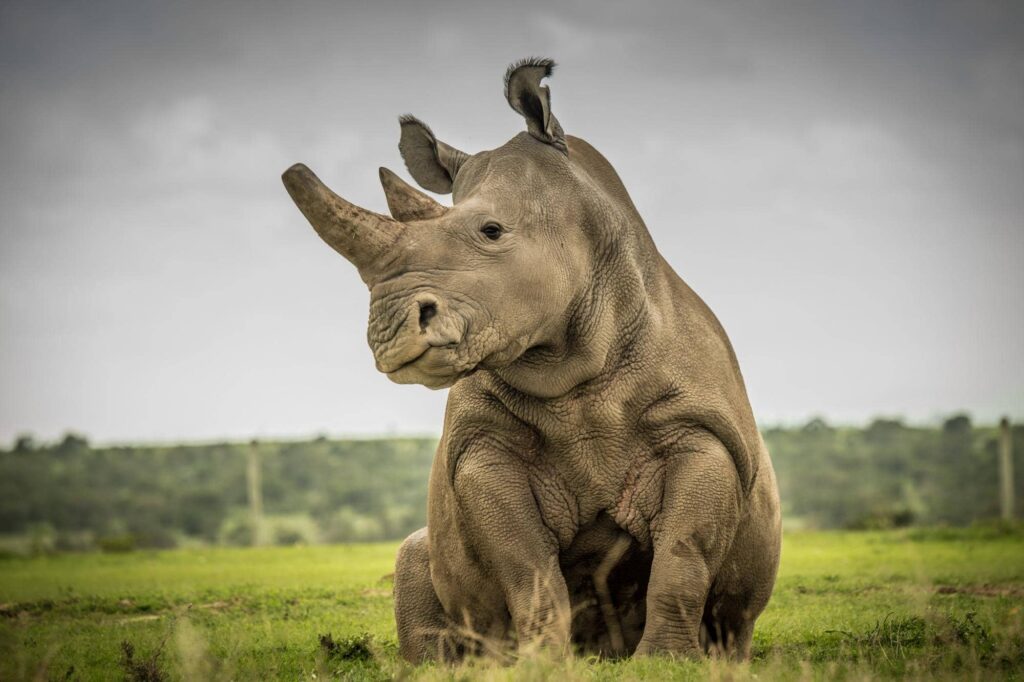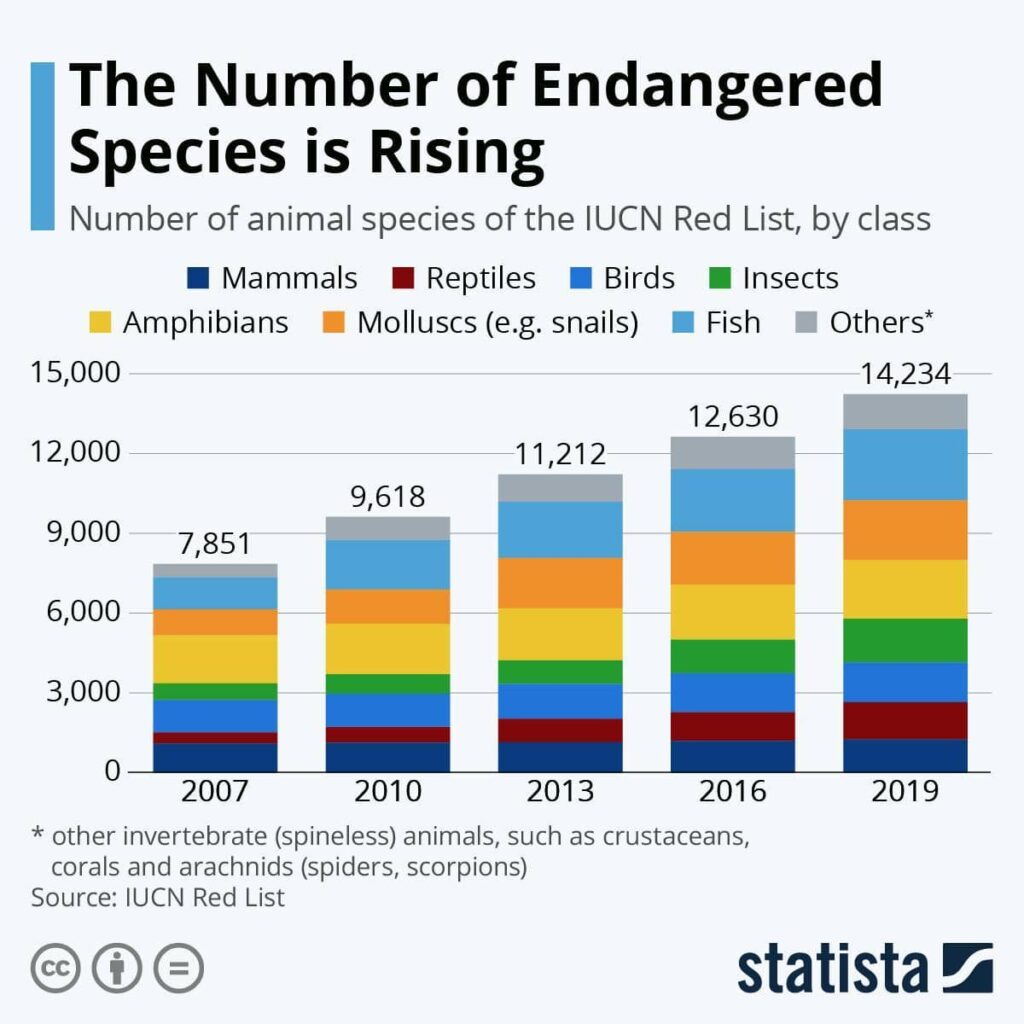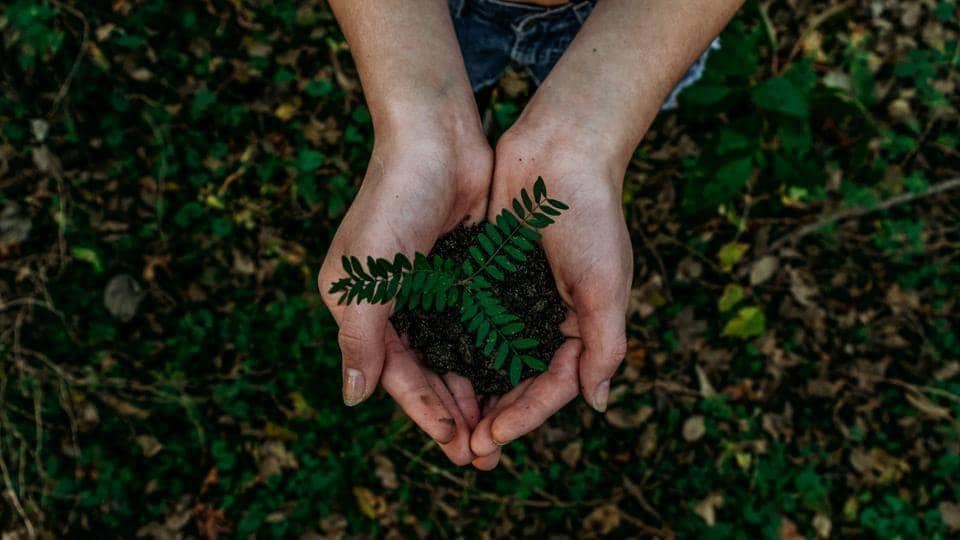The death of Sudan, the last lone surviving male Northern White Rhino, on 19th March 2018 marked the end of a loved subspecies of White Rhinos in Central Africa. The species, having lived 55 million years on this planet, has survived the Ice Age, meteor strikes and innumerable historical changes, but could not survive the humans.

We have seen the extinction of an entire subspecies in front of our own eyes. There are so many more species that have gone extinct besides the Northern White Rhino and if animal poaching, illegal buying and selling of animal products and the unstoppable cutting down of forests continues with the same vigour then by 2050, 11% of the animals on this planet will be placed under the “endangered” category.
It was disheartening to see the numbers, to say the least. Whilst I was scrolling through figures after figures, I felt guilt course through my chest. I didn’t understand it at first. I asked myself “Ada, why are you feeling guilty when this isn’t your fault?” and that’s exactly where I was wrong. Even though we are not the ones who are poaching these animals or destroying the species, our ignorance and indifference are also harming the species and the entire ecosystem at large. We can transfer the blame to climate change however much we like, but that too is our doing.
Let’s use this article as the stepping stone towards caring about our planet and caring for all those who are breathing and living on it.

A close look at the numbers and visuals and you shall see that from 2007 to 2019, the number of threatened species has almost doubled. The International Union for Conservation of Nature and Natural Resources (IUCN) maintains a Red-List for all the endangered species. According to data collected in 2020, one-third of the species mentioned in the list are at the risk of extinction.
Extinction is a natural process until it exceeds 5 species a year. The rate of extinction currently is about 1000-10000 times higher than the natural rate of extinction. According to data collected by the World Wild Fund (WWF), there are between 200 to 2000 extinctions every year. Therefore, extinction is no more a completely natural occurrence. Mass extinctions are inevitable. We’ve had 5 mass extinctions till date and the sixth one is underway.
The sixth mass extinction should not have been a concern if the extinction rates were natural or close to it but as mentioned earlier, the rates are exceedingly high. Currently, there are more than 37,400 species that are threatened with extinction. That is approximately 28% of all assessed species in the world. 41% amphibians, 34% conifers, 26% mammals, 14% birds, 33% reef corals, 36% sharks and rays and 28% crustaceans constitute the number of threatened species in the world. Out of 37,400 species that are threatened with extinction, more than 7000 of them are critically endangered. Moreover, 90% of the fish stocks are either depleted, over or fully exploited.
While it is a matter of concern that there is an increase in the number of endangered species in the world, the increase in numbers can also be attributed to the increase in the number of assessments every year. For instance, in 2000, the scientists were only aware of 10 animals that were threatened with extinction because they only knew of those 10 species. In subsequent years, they discovered more animals as assessments increased and thus, the numbers increased from 10 to say 100. (hypothetical numbers). This is why there is no data or report which represents the trend of increasing numbers of endangered species over time.
Nonetheless, in order to rectify our mistakes, we need to recognize them first.
Animal poaching, sport-killing, industrialization, urbanization, habitat-loss, bush/forest fires are some of the major reasons why species are becoming critically threatened.
Animal poaching is an illegal activity but an economically significant one. Animal products yield a lot in the market. The ivory tusks of elephants, the horns of rhinos and the skins of tigers are some of the products that these animals are poached for. The number of rhinos in the wild has significantly decreased over the years because of the excessive poaching of these animals for their horns. There is a belief that their horns yield rare medicinal properties. Similarly, the population of tigers has reduced to 3900.
Besides animal poaching, trophy killing and hunting as a sport still continues to further threaten the endangered species in the wild. Data suggests that approximately 2 million animals are killed in the name of trophy hunting every year.
Another major reason for the increasing rate of extinction amongst the animals and the plants is habitat loss. Excessive industrialization and urbanization has led to the cutting down of several forests across the globe. So many animals have lost their homes and have been forced to roam the streets in towns and cities and similarly, so many species of trees have been wiped out due to construction of infrastructure.
For instance, the government wanted to cut down the only remaining Alphonso belt in the world found in the Western coast of India to extract resources. The development project was met with a lot of revolt and resilience in Maharashtra since the Alphonso orchids hold a sentimental value in their lives and are the only remaining orchids in the world. If those orchids are cut down then this species of mangoes will be wiped out forever. In other words, it will go extinct!
It may seem that cutting down trees, overfishing and trading animal skins, horns and tusks illegally are yielding economic profits today. This may be true in the short run but in the long run, the costs will be much higher. Extinction is something that we can not afford. The rainforests which are economically significant are under immense threat. Bushfires, felling of trees and agricultural practices have put immense pressure on the plant species to survive. It may seem profitable to destroy the ecosystem today, but it is going to cost us thousands of times more to cover up for our mistakes.
What we need to understand is that every animal and plant species in the world today are a part of the ecosystem. There is a balance that has to be maintained because the survival of all the species are interlinked to one another. If even one of the species goes extinct, it tips the balance and triggers the extinction of several other species. While this is inevitable, as mentioned earlier in this article and by Charles Darwin, there is a rate at which it should occur. The rate at which it is occurring now has a lot to do with undesirable climatic conditions, habitat loss and exploitation of animals.
Even though it’s not all bad news, there are some animals whose numbers are increasing (e.g. Southern Rhino), we need to take measures to conserve our ecosystem. We should take responsibility for our planet and the survival of the future generations. It is in our hands.

If you haven’t already clicked on the link attached above, please do.
Did you see? Did you see the percent of species that face the critical risk of extinction?
If you scroll further down, you shall see a statement, that if you are indifferent towards, you are no better than those who poach animals and participate in the buying and selling of illegal animal products.
The statement reads that by 2100, every one in four animals will go extinct if no action is taken now. What is more alarming than the numbers is the use of the word “now”.
Our actions and choices paint the future and if we do not change them NOW, we will be destroying our entire ecosystem.
WE CANNOT DO NOTHING,
WE SHOULD DO SOMETHING!
Written by- Ada Khan
Edited by- Oishika Ghoshal
